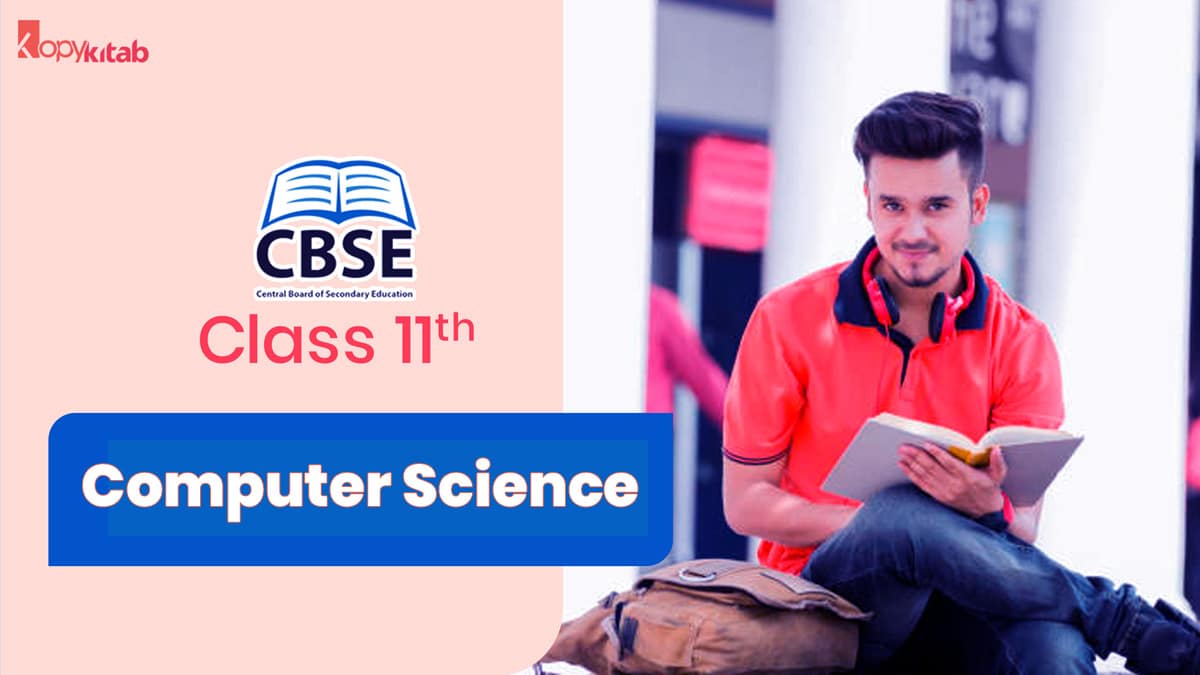
CBSE Class 11 Computer Science Books 2023 For Term 1 & Term 2
NCERT books are considered to be the best choice for preparation but it is advisable to refer to other books for a better understanding of the subject. Here is a list of some CBSE Class 11 Computer Science Books that are considered by the students while preparing for the Computer Science examination.
Click The Links below to Get CBSE Class 11 Computer Science 2023 For Term 1 & Term 2
CBSE Class 11 Computer Science Syllabus 2023 For Term 1 & Term 2
Knowing the syllabus will help you to get an idea about the topics they are going to study for the academic year 2023. After you study all the topics mentioned in the CBSE Class 11 Computer Science Syllabus then you can score a good percentile in their Class 11 CBSE board Computer Science Exam.
| Unit I: Computer Systems and Organisation |
|
| Unit II: Computational Thinking and Programming – 1 |
|
| Unit III: Society, Law and Ethics |
|
CBSE Class 11 Computer Science NCERT Solutions 2023 For Term 1 & Term 2
CBSE recommends NCERT books and most of the questions do come from NCERT textbooks. NCERT solutions are up to date based on the textbooks, with the latest modifications as per the CBSE 11th Computer Science syllabus. CBSE 11th NCERT solutions are the best books to follow as they are specifically designed for CBSE classes. These NCERT Class 11 Computer Science books contain chapter-wise questions and answers.
|
Download free PDF |
CBSE Class 11 Computer Science Sample Question Papers 2023 For Term 1 & Term 2
After finishing the entire Class 11 syllabus, it is a good thing to solve the question papers in a timely manner. This will help the students to improve their speed of answering too. CBSE releases sample question papers every year for the students so that their preparation could become much better as well as to get used to the format of the question paper.
You should have the following materials to find the complete question papers related to CBSE 11th Exam
|
Oswaal CBSE Sample Question Paper Class 11 Computer Science Book |
CBSE Class 11 Computer Science Previous Year Papers 2023
Solving the question papers that are released by the CBSE during the same year as well as solving the previous year’s question papers helps to a great extent. It will help to develop the speed and understand the question and respond quickly. This will help where you stand, your strengths, and where you need to focus for further preparation.
We have covered a detailed guide on CBSE 11th Computer Science 2023 For Term 1 & Term 2. Feel Free to ask any questions in the comment section below.
FAQs On CBSE Class 11 Computer Science 2023 For Term 1 & Term 2
What is the syllabus of computer science in class 11?
You can refer to the above article.
Is Computer Science hard in class 11?
Class 11 Computer Science is definitely easier than its counterparts like Maths, Physics, and Chemistry.
How many chapters are there in CBSE computer science class 11?
As there are 4 units in 11th class computer including 38 chapters.
Can I take computer science only in 11th?
No need to take any computer subject at 11th or 12th standard. There is no such compulsion.
Are there maths in computer science?
Math is an essential component of computer science that underpins computing and programming concepts. Without it, you would find it challenging to make sense of abstract language, algorithms, data structures, or differential equations.